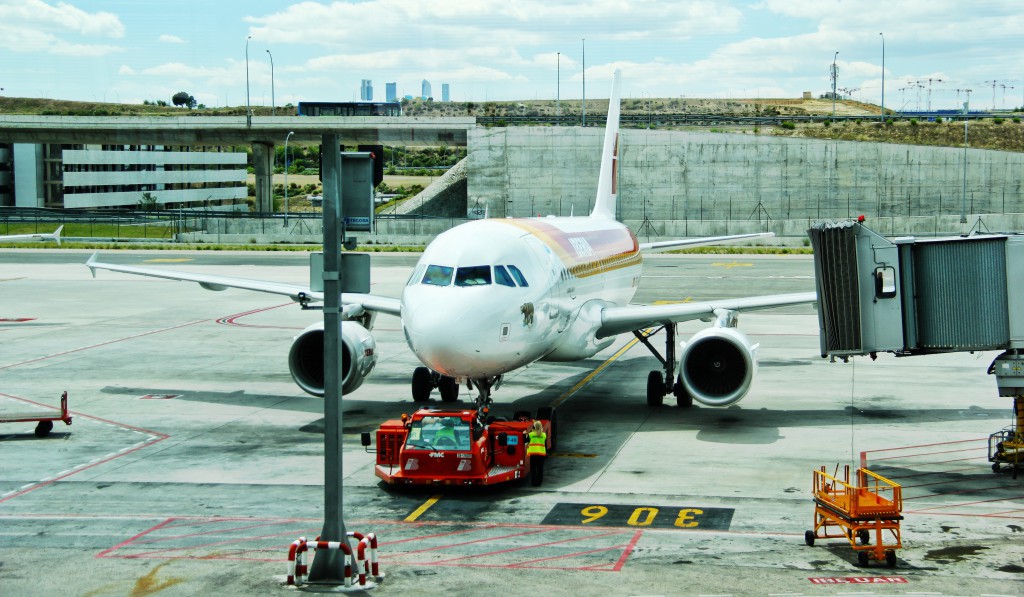 The prospect of travelling by air may have one time, long ago, held some amount of excitement for travelers. In a bygone era that some might call more innocent or possibly naive, the experience of boarding an airplane might have held dignity, convenience and something resembling novelty. I don’t know. I have not lived in that age.
The prospect of travelling by air may have one time, long ago, held some amount of excitement for travelers. In a bygone era that some might call more innocent or possibly naive, the experience of boarding an airplane might have held dignity, convenience and something resembling novelty. I don’t know. I have not lived in that age.
Flying now, in North America, is an unpleasant experience in large part to the security precautions that must be taken to keep the skies safe. In order to progress to your boarding area you need to observe the following inconveniences: stand in a long line; remove your shoes, belt and jacket; unpack any laptops and tablets from your carry on luggage; submit to a scan; and finally, redress and repack.
This process is changing for the better, thankfully, and all because of biometrics.

The Real Problem
The problem from which all the above inconveniences stem is human. Or perhaps more accurately, the problem is humans. The very reason that any security protocol needs to be observed is that some people can’t be trusted to live nicely by the rules of society. The security airport passenger protocol can’t be convenient, at least not yet, because it takes other people (who can be trusted with the safety of others) to make sure the unwanted people don’t end up flying through the air, putting others in danger.
If the airport security process can be automated however, and in doing so, at least one of the two human factors can be eliminated. With security automation, limited airport staff is no longer an issue, meaning more security lanes can be made available cutting down time spent lining up.
But what does an automated system require?
The Coming Solution
Like all biometric security, automated border control requires a high level of trust in end users.
Successfully passing an airport security check requires the comparison between a credential, a document, and a person. Essentially, the name on the boarding pass (credential) needs to match the one on the passport (document) and the person described in the passport needs to match the person trying to get on a plane.
This three-way comparison requires two important innovations in order to be automated: a thorough pre-screening process for passengers and the biometric hardware that can pin the person to the passport.
The TSA’s PreCheck program is an example of the former component. By enrolling biometrically as a trusted flyer with the TSA, American travelers can be confirmed as trusted and biologically associated to their identification document. In other parts of the world, biometric national ID cards can play similar roles.
Automated border control (ABC) eGates and kiosks make up the other half of the equation, essentially allowing the traveler to perform their own security check through the presentation of secure documents and biometrics (usually fingerprint, facial and iris).
According to recent research, this method of automated border control in airports is quickly becoming popular on a global scale. And thank goodness it is: security checkpoints have been in long need of a convenience injection. It’s always worth remembering, however, that no matter how easy things get, they can get even easier.
The Future of Air Travel
Even after the world finishes embracing automated border control there will still be complaints about inconveniences. Just like any security based transaction, we all want border control to be a seamless and intuitive zero friction experience.
But what might that look like?
Well, it seems likely that mobility will play a large role, as will the Internet of Things. If a biometric authentication process is in place, confirming that you are cleared to fly, there seems little reason that, given the proper security assurances, a wearable device and a proximity factor can’t replace the passport checks.
In a webinar on the topic of ABC eGates and kiosks, Acuity Market Intelligence principal Maxine Most explained:
“I think this is going to be an evolution, but at some point I can imagine either passports are embedded in our mobile phones, and so rather than necessarily doing what we would consider a full kiosk check in, perhaps you’re just picking up your phone and just flashing it by a reader that just picks all that information up, or we’re using the mobile phone as the secure document which we’re then linking: Maybe we are checking in at the airport and it’s accessing the mobile phone for the secure document.”
Another option is already being explored by Vision Box, a biometrics company that has suggested a completely barrier free airport security experience. Once a passenger checks in, her biometrics are scanned and verified at multiple touch-points throughout the airport, none of which require her lining up to pass through a controlled barrier.
It is is this continued move toward a convenient and secure border control experience that the core ideas of identity management reveal themselves. Convenience and security are strongly correlated demands in all transactional facets of modern life. We want to experience the fantasy convenience of the imagined past while resting assured that the highest levels of safety and security are being assured. There’s nothing desirable about dangerous convenience or invasive safety. Everything is about balance in biometrics.
—
November 13, 2014 – by Peter B. Counter


Follow Us